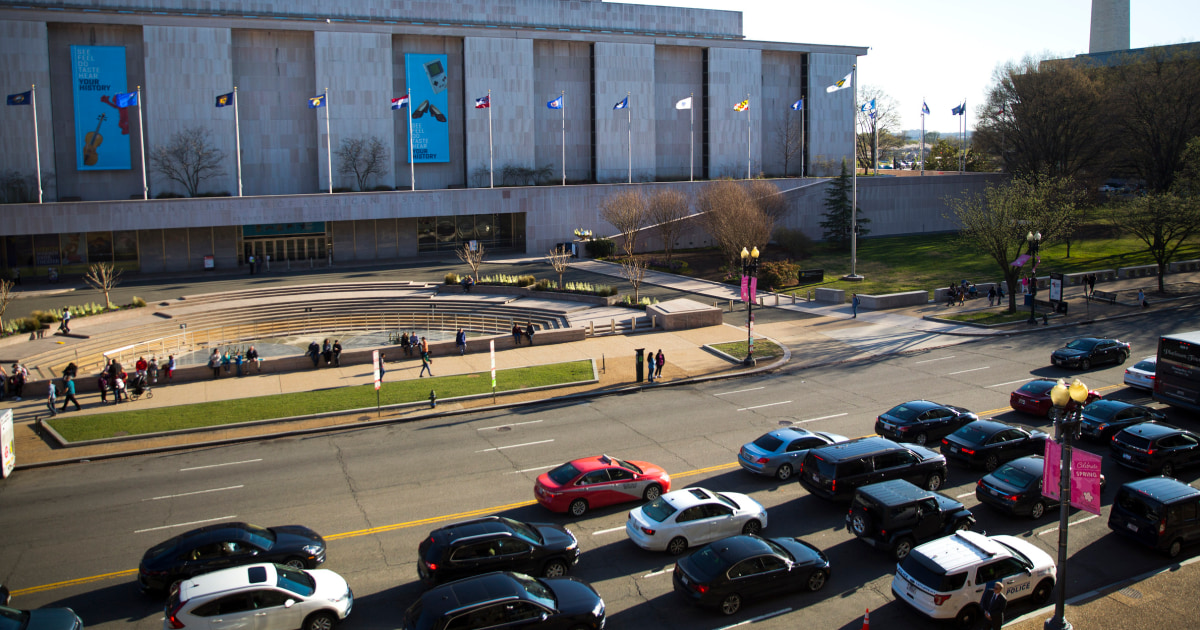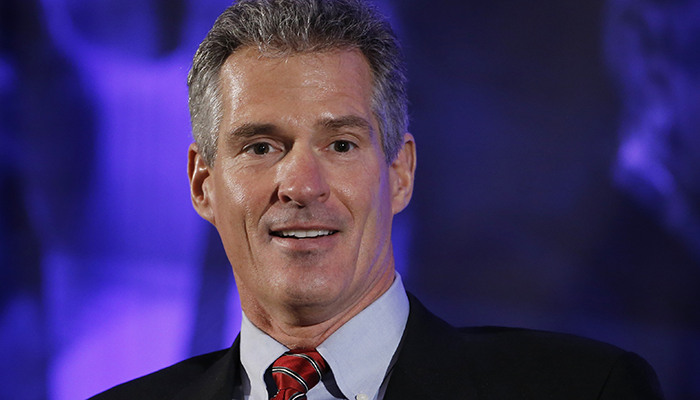
The Smithsonian’s National Museum of American History will once again mention President Donald Trump in an exhibit on presidential impeachments after the removal of a placard noting his two Senate trials sparked concerns this week over the White House’s influence on the institution.
In a statement on Saturday, the Smithsonian detailed its decision to remove the Trump placard from the “Impeachment” section of an exhibit titled “The American Presidency: A Glorious Burden,” saying the decision was not influenced by politics, but rather the conditions of the placard.
“The placard, which was meant to be a temporary addition to a 25-year-old exhibition, did not meet the museum’s standards in appearance, location, timeline, and overall presentation,” the Smithsonian’s Saturday statement read. “It was not consistent with other sections in the exhibit and moreover blocked the view of the objects inside its case. For these reasons, we removed the placard.”
The “Impeachment” section of the exhibit “will be updated in the coming weeks to reflect all impeachment proceedings in our nation’s history,” the Smithsonian said.
The Washington Post was the first to report on the changes to the exhibit.
According to the Post, the Trump references were removed from the exhibit after the Smithsonian undertook a content review following pressure from the White House and accusations of partisan bias.
In its statement, the Smithsonian said it was “not asked by any Administration or other government official to remove content from the exhibit.”
“The American Presidency: A Glorious Burden” exhibit was created in 2000 and hasn’t been formally updated since 2008, a spokesperson for the Smithsonian told NBC News on Thursday. In lieu of an update, which the museum indicated would be costly, the Smithsonian in 2021 affixed a placard noting Trump’s two impeachments to the exhibit.
“It was intended to be a short-term measure to address current events at the time, however, the label remained in place until July 2025,” the spokesperson said Thursday.
Because the exhibit, which also covers Congress and the Supreme Court, hadn’t been updated since 2008, the museum decided to restore the “Impeachment” section of the gallery “back to its 2008 appearance,” the spokesperson said at the time.
The decision to remove the Trump label drew criticism from lawmakers, particularly as Trump has sought to exert his influence over the Smithsonian, which encompasses 21 museums, nine research centers and a zoo.
Senate Minority Leader Chuck Schumer, D-N.Y., on Friday accused Trump of attempting to “rewrite history.”
“He is censoring the American History Museum. It’s Orwellian. It’s downright Orwellian. It’s something you’d see in an authoritarian regime,” Schumer said. “Here’s my message to the president: no matter what exhibits you try to distort, the American people will never forget that you were impeached not once, but twice.”
Trump has called for a reimagining of the Smithsonian, accusing the cultural institution in March of coming “under the influence of a divisive, race-centered ideology” and signing an executive order to “restore the Smithsonian Institution to its rightful place as a symbol of inspiration and American greatness.” In that order, Trump directed Vice President JD Vance to work with the Smithsonian’s Board of Regents to “remove improper ideology” from the museums.
Trump also barred spending on exhibits or programs “that degrade shared American values, divide Americans based on race or promote programs or ideologies inconsistent with Federal law and policy.”
Last week, artist Amy Sherald said she withdrew her exhibit from the Smithsonian’s National Portrait Gallery after concerns were raised about a portrait she featured of a transgender woman dressed like the Statue of Liberty.
“I was informed by the National Portrait Gallery that concerns had been raised internally about the museum’s inclusion of a portrait of a trans woman titled Trans Forming Liberty. These concerns led to discussions about removing the work from the exhibition,” Sherald said in a statement. “I cannot in good conscience comply with a culture of censorship, especially when it targets vulnerable communities.”
A spokesperson for the Smithsonian disputed Sherald’s characterization of the incident, arguing that the artist was not asked to remove the painting, but rather the museum wanted to contextualize the portrait through a video featuring differing opinions of it.
“The Smithsonian strives to foster a greater and shared understanding. By presenting and contextualizing art, the Smithsonian aims to inspire, challenge and impact audiences in meaningful and thoughtful ways. Unfortunately, we could not come to an agreement with the artist,” the spokesperson said.








